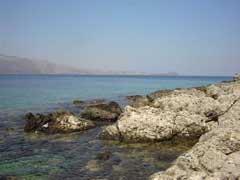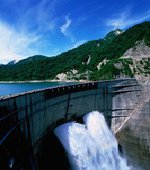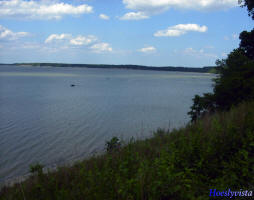 Disaster Risk Reduction: On the way to WCDRR
Disaster Risk Reduction: On the way to WCDRR
The upcoming Third World Conference on Disaster Risk Reduction (WCDRR) in Sendai, Japan, in March 2015 is expected to bring together more than 6,000 stakeholders from government agencies, international and regional organizations, the private sector, civil society and non-government agencies. Its main outcome is expected to be a post-2015 framework for disaster risk reduction (Hyogo Framework for Action 2 - HFA-2).
Recognizing the relevance of such a global event, UN-SPIDER has been working with more than 15 partners from the Earth Observation community and from UN and other international, regional and national organizations from Asia, Africa, America, the Caribbean and Europe to promote the use of Space-based information atWCDRR. In doing so, in September 2014, UN-SPIDER and several partners have approached selected government agencies requesting their support to ensure that specific texts on the use of Earth Observation and Space-based information find their way into the HFA-2 resolution, as it has already been done in paragraph 18 c) of the pre-zero draft.
Several indicators have been proposed as part of the monitoring system that will accompany HFA-2. UN-SPIDER has therefore elaborated jointly with GEO, CEOS, JAXA, DLR and UNOSAT suggestions on how specific Earth Observation products and satellite imagery, in combination with data and information from the World Bank, the United Nations and other institutions, can contribute to these indicators.
In addition, UN-SPIDER and its partners have approached the organizers of WCDRR with the request to conduct a working session dedicated to the use of Earth Observation to support national and local Disaster-risk reduction initiatives. Subsequent efforts will be made during the coming months, in particular during the Second Preparatory Committee Meeting to take place in Geneva in November.
| A delegation led by ICSU as the organising partner of the UN Science and Technology Major Group took part in the first meeting of the preparatory committee for the 3rd UN World Conference on Disaster Risk Reduction.
The two-day meeting in Geneva this week is intended to prepare for the March 2015 conference in Sendai, Japan, where governments are due to approve a new global framework to reduce disaster risk to replace the current Hyogo Framework. The Hyogo Framework for Action 2005-2015 sought to build the resilience of nations and communities to disasters. The Science and Technology delegation brought together a broad coalition of organizations including the Inter Academy Partnership (IAP), the Global Young Academy, the UKCDS, Public Health England and the Science and Technical Advisory Group of the United Nations Office for Disaster Risk Reduction (UNISDR) as well as experts from Latin America, Africa and the Asia-Pacific region. The Science and Technology Major Group focused its interventions on a statement agreed in March 2014on establishing an international science advisory mechanism for disaster risk reduction to strengthen resilience for the post-2015 agenda. In a statement to the plenary, Rüdiger Klein, Executive Director of ICSU’s Integrated Research on Disaster Risk programme (IRDR), highlighted the importance of mutual reinforcement of strategies for disaster risk reduction and sustainable development, as well as the critical need for capacity building in SIDS and LDCs, without, neglecting the exposure of middle and high income countries. |
 The Delegation of the Science & Technology Major Group at the 1st Preparatory Committee Meeting of the 3rd United Nations World Conference on Disaster Risk Reduction, 14-15/07/2014, Geneva (Switzerland) |
|
Many of the country statements – from both developed and developing countries – emphasized the need for science and technology at the local and national levels. They requested more capacity building, better knowledge transfer and accessibility to data, more comprehensive multi-hazard risk assessment and monitoring that would contribute more strongly to deliver innovative solutions for disaster risk reduction, a government and civil society requirement. In a joint statement, the UN said it “supports the proposed creation of an international science advisory mechanism to strengthen the evidence base for the implementation and monitoring of the new framework |
The European Union, in its statement, said the new Hyogo framework “should also encourage a more systematic and reinforced science-policy interface, including foresight to address future risks and challenges.” A first draft of the Second Hyogo Framework is expected to be available later this summer for comment, and will be taken forward to the 2nd preparatory committee meeting, Nov 17-18 in Geneva, in preparation for the 3rd World Conference in Sendai, Japan. |
| Contact information | n/a |
|---|---|
| News type | Inbrief |
| File link |
http://www.wcdrr.org/preparatory/prepcom2 |
| File link local |
|
| Source of information | UN-SPIDER |
| Keyword(s) | Disaster Risk Reduction |
| Subject(s) | HYDRAULICS - HYDROLOGY , INFORMATION - COMPUTER SCIENCES , MEASUREMENTS AND INSTRUMENTATION , METHTODOLOGY - STATISTICS - DECISION AID , NATURAL MEDIUM , PREVENTION AND NUISANCES POLLUTION , RISKS AND CLIMATOLOGY |
| Relation | http://www.emwis.net/thematicdirs/events/preparatory-committee-second-session-third-un-world-conference-disaster-risk |
| Geographical coverage | Switzerland,Japan, |
| News date | 02/10/2014 |
| Working language(s) | ENGLISH |
 you are not logged in
you are not logged in





